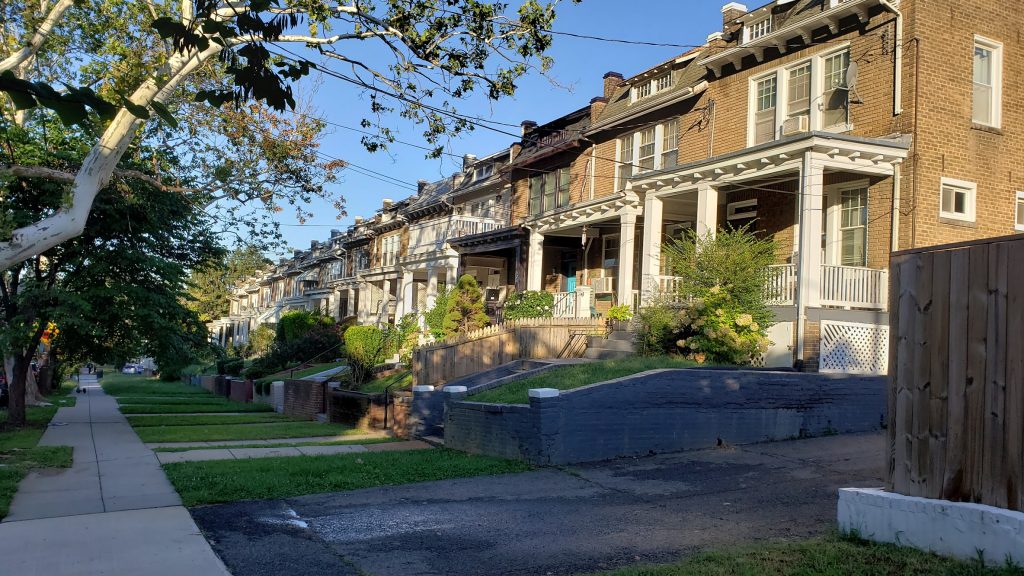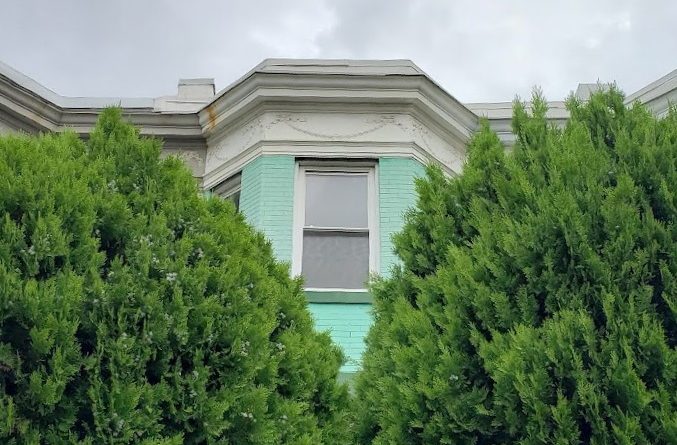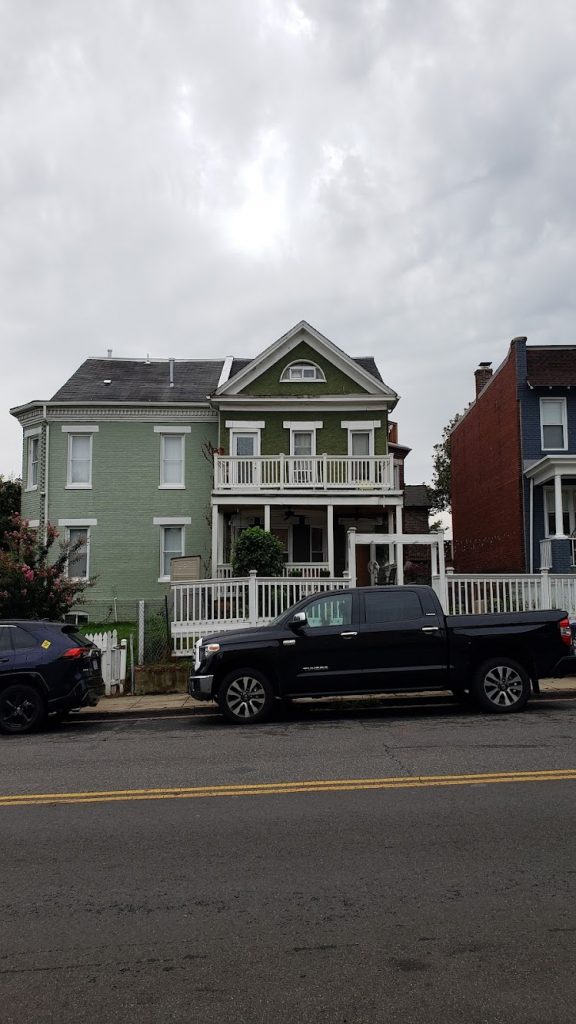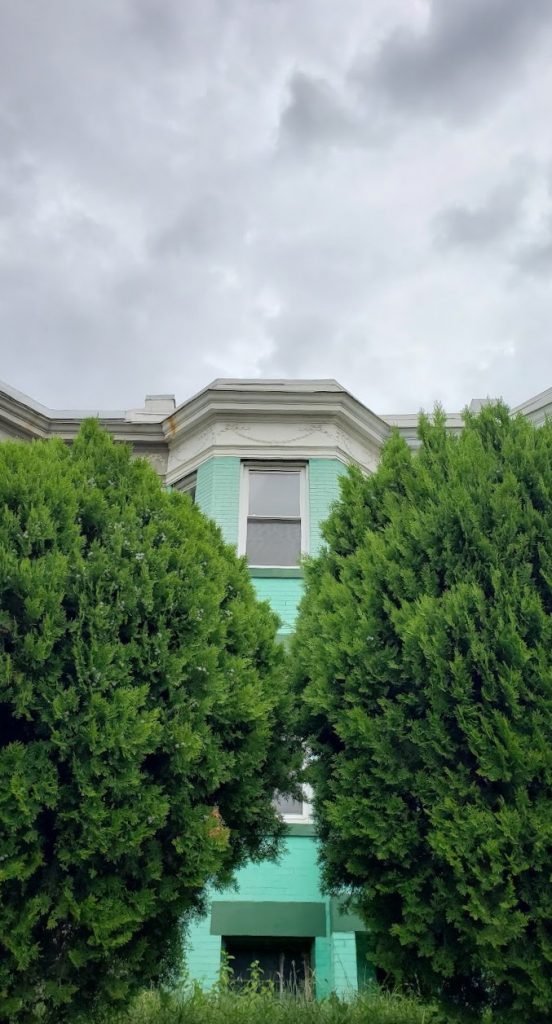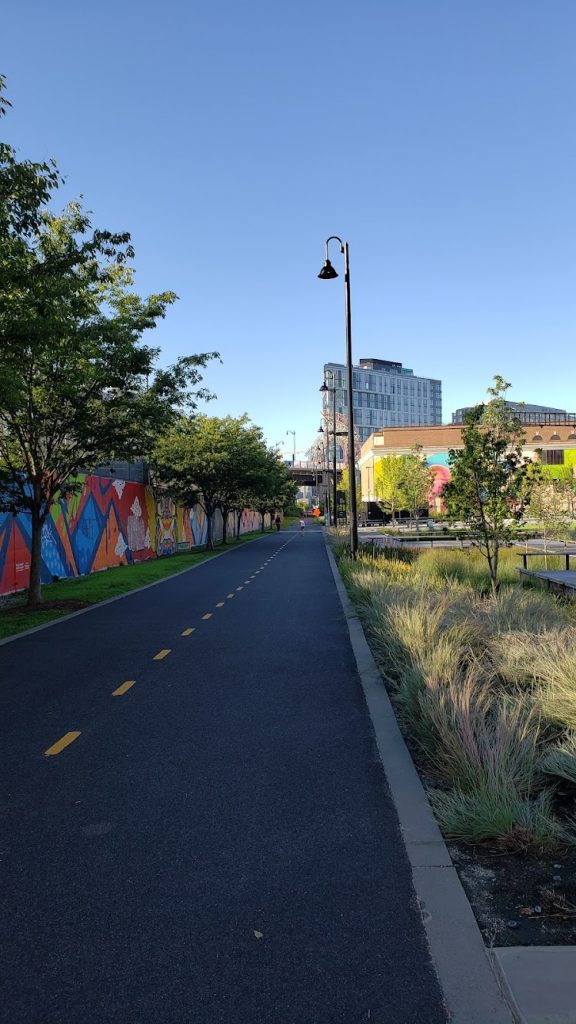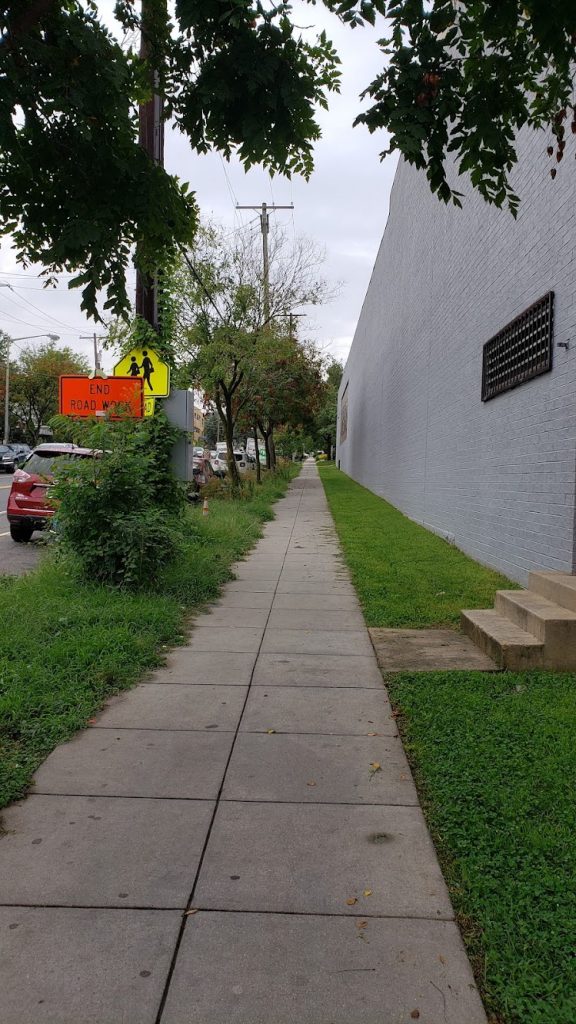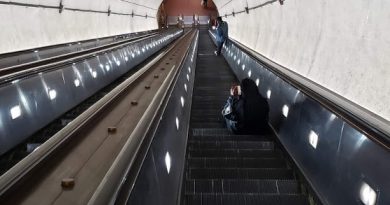Exploring the New Washington, DC: Edge Urbanism in Edgewood/Brookland
Sampling a few different DC neighborhoods in my part-time residency for New Job, my late August and early September were spent hanging out in Edgewood, a neighborhood that is roughly between the Rhode Island and Brookland-CUA red line metro stops. It’s a ten minute-plus walk from the Rhode Island Metro, but an electric scooter or eBike will reduce this trip to just a few minutes. This is especially welcome when your hosts let you use their eBike, which got me more or less the whole way up Rock Creek to Silver Spring and back via Takoma and Fort Totten. This neighborhood is sort of smooshed between different things, which is apparent in its being bisected by a major rail corridor. This has lent itself to an interesting mix of housing and uses, ranging from the traditional DC-style “Wardman” rowhouses to industrial uses and adaptive reuse. Let’s have a look!
Neighborhood Stop #1: Forman Mills in Edgewood
I had to stop into Forman Mills around the corner to pick up an Amazon package from their “Vertigo” locker– a USB-C charger that can charge both of my laptops and my phone at the same time! (Yes, I tried finding this at local stores, and yes, I wanted to save $50, or $350 off the price of a “docking station.” The charger is called McDodo. I’m not kidding. Chinese branding leaves us with some questions). The retail outlet, dimly-illumed with flickering, tubular fluorescent bulbs, felt like it was on the edge of some sort of collapse. Final clearance, kind of thing, but without the final clearance prices. This was later confirmed by two people I spoke with. KSWISS tracksuits for $30?! In this economy?
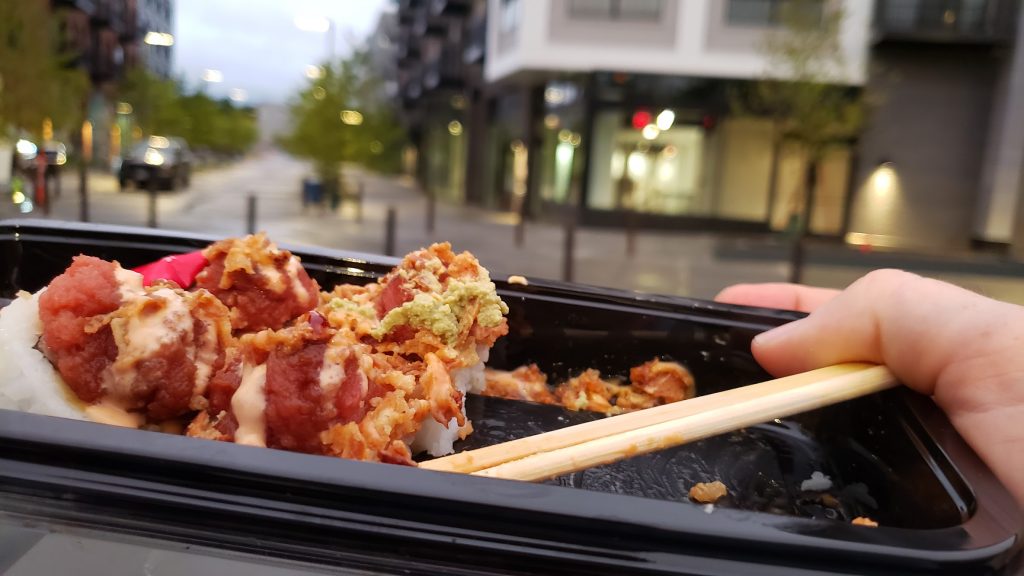
“That Forman Mills is not long for this world,” a friend told me, bursting my bubble after I got a truly amazing, pink-and-gold-on-navy sweatshirt on closeout for $5.
“What, they’re about to gentrify out the Forman Mills?”
“Yeah, it’s probably about to look like everything to the east,” he mused ambivalently.
Is nothing sacred?!
More density, but a loss of a retail space that definitively serves the neighborhood and has some deals. “Everything to the east” referred to the areas surrounding the rail corridor and the Metropolitan Branch Trail that I wrote a bit about before. Boxy, glassy apartment buildings that are surprisingly vacant— rents have dipped from their peaks in early 2020 and 2019, and vacancy rates have ticked up slightly. But the construction boom continues. Exactly where this will lead is anyone’s guess, but new home sales figures show a cooling housing market— which means a deflating, if not bursting, of this preposterous ultra luxury bubble.
There are entire neighborhoods being built on former industrial– perhaps “peri-urban”- land around the Metro lines. This is a little bit different from the case of Minneapolis’ greenway, which I wrote about earlier this year. That greenway occupies a much smaller footprint and runs through an already pretty dense neighborhood. Little of it is large enough to host, say, a railyard or public works depot.
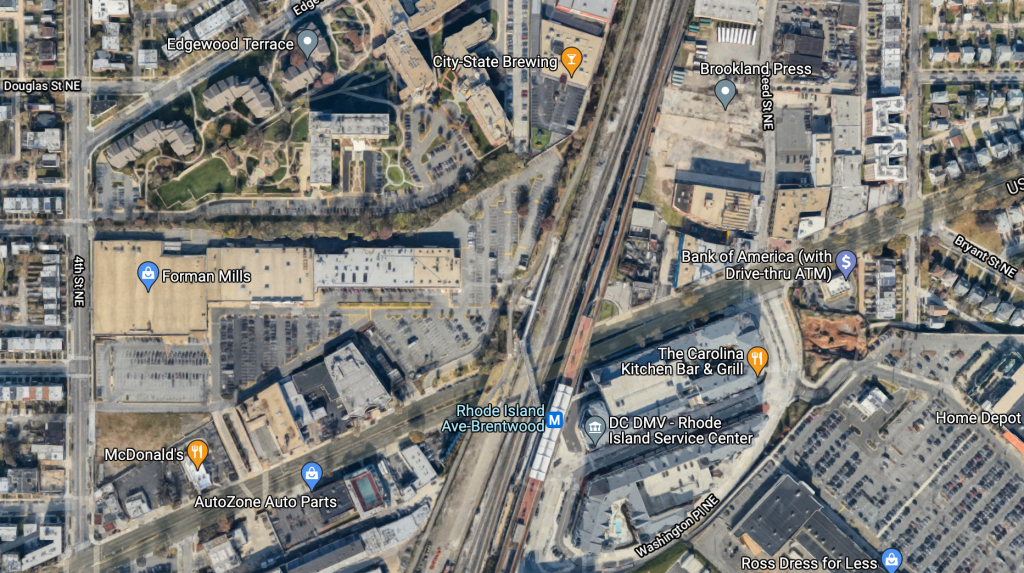
Neighborhood Stop #2: Rail Corridor Adjacencies
DC doesn’t have much in the way of an industrial base– manufacturing, for example, is less than a single percentage point of the city’s employment. But there are remnants, at least, of a more industrial era. The Metro corridor (pictured above) hosts not only the Red Line but also freight. It also has plenty of extra space from long-disused sidings backing up to buildings that have since been converted into bougie apartments or what have you. The Forman Mills And Then Some complex, which has been redeveloped from a previous iteration (below), highlights some of these changes with the construction of new, high-density housing in just the past year or two.
There is still a crazy amount of surface parking that is probably going to get et up [sic] with demand for higher density development. DC Metrobar is another fixture of this new little pocket development. If you wondered how they were able to obtain and move a real life railcar for this purpose– it’s kind of an interesting story.
